How Wagga Wagga’s ‘human glove’ 1933 murder mystery was solved
A man’s decomposed body was found in Wagga Wagga’s Murrumbidgee River in 1933. To help solve his murder, police were able to catch the killer by tracing his fingerprints from a glove.
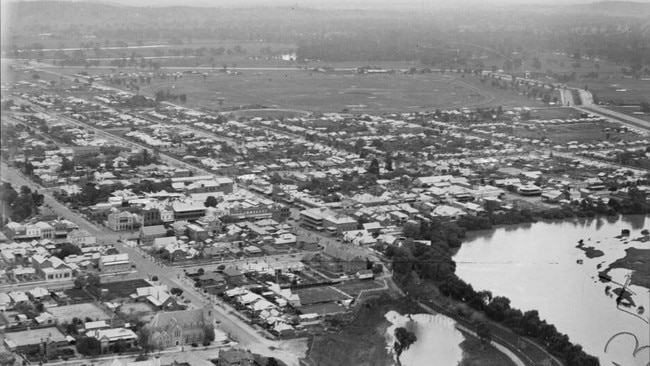
Today in History
Don't miss out on the headlines from Today in History. Followed categories will be added to My News.
The morbid fascination with murder and mayhem is not a modern phenomenon.
While we get our fix of true crime through podcasts and Netflix docos these days, in the time before this technology, the Police Museum Exhibition at the Sydney Royal Easter Show helped satisfy this curiosity.
In 1950, crowds lined up to enter the basement of the Commemorative Pavilion at Moore Park to lay eyes on photos of the Surry Hills room where “old Kate” Philbrook was murdered in 1931; the after death images of Linda Agostini, the victim in the famous Pyjama Girl case; and the original handcuffs used to hold bushranger Ned Kelly after he was arrested at Glenrowan.
But the star attraction that year was the preserved “human glove” — or the skin from the right hand of Percy Smith, whose body was found in Wagga Wagga’s Murrumbidgee River on Christmas Day in 1933.
At the time, it was one of the most famous murder cases in NSW, but today is all but forgotten, says author Michael Adams.
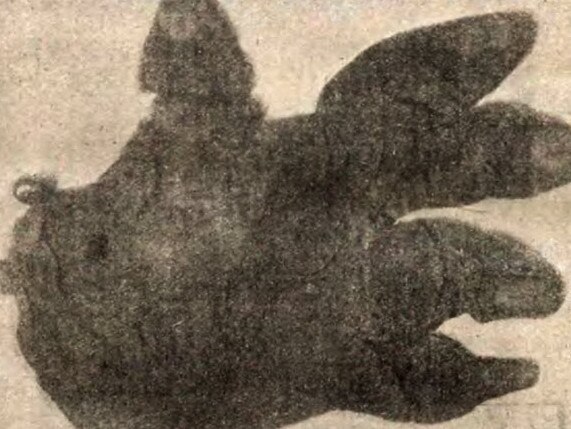
He researched the case for his podcast Forgotten Australia with the first of two episodes to be released on Monday.
“It was hugely well-known back then,” Adams says.
“It spurred a whole bunch of human glove cases because police had used what was referred to as a world first method for identifying fingerprints.”
On December 25, 1933, two Wagga fishermen were on the Murrumbidgee River when they saw a human buttocks on the river’s surface.
They rowed to shore and ran to a nearby farmhouse to call police and report the dead body.
When Detective Constable Joe Ramus arrived on the scene, a badly decomposed male body was dragged from the river, the top half covered in a sack.
“But the most distinguishing aspect was that the epidermis on the feet and hands had come loose and was, in parts, hanging off the body,” Adams says.
“The skin around the right hand was completely missing, a string tied around that wrist having cleanly severed it as the body bloated in the water.
“Police were able to determine the man was wearing clothing that distinguished him as unemployed, but with no ID on him, no skin on his fingers and his skull bashed in, identification would be difficult.”
Detective Sergeant Thomas McRae of Sydney CIB, who had been involved in several high profile cases, came to Wagga to assist in the investigation and shortly after Ramus discovered what appeared to be a human glove, complete with nails still attached, on the riverbank near where they had pulled the body in.
The human glove was taken to Sydney for analysis and fingerprinting expert John Walkom would later tell the court how he placed his hand in a rubber glove and then into the human glove which allowed them to get prints, eventually identifying the dead man as 35-year-old Percy Smith.
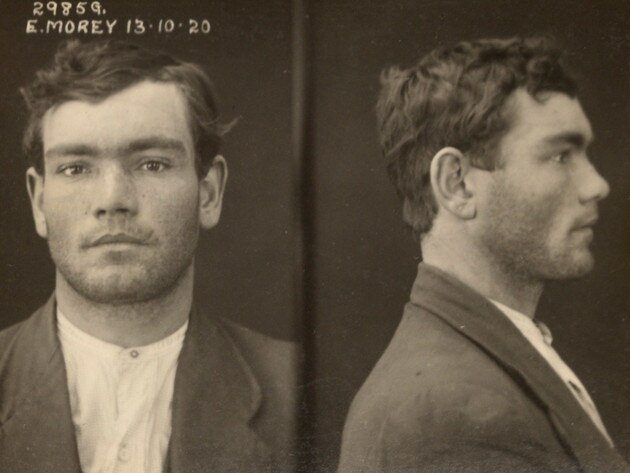
A dogged police investigation placed Smith in the company of Edward Morey around the time of his disappearance and while Morey tried to distance himself from any association with Smith, a parade of witnesses placed the two men together on several occasions.
Morey was charged with Smith’s murder on January 8, 1934 and an inquest followed at which the coroner ordered Morey to stand trial for murder on May 8, 1934.
Invalid man, Moncrieff Anderson, was a witness for the prosecution and after testifying, he was shot in the head by his wife, Lilian, who had fallen in love with Morey and allegedly wanted her husband out of the way.
Morey was sentenced to death, later commuted to life, and released in 1955. He died in 1977 aged 80.
Lilian would go to trial three times before she was found guilty of manslaughter and sentenced to 20 years in prison.
Ramus went on to have a stellar police career, rising to the ranks of Detective Superintendent and Chief of the Sydney CIB before retiring in 1955.
When he died in 1968 he was eulogised for having solved 100 murders.
Got a local history story to share? Email mercedes.maguire@news.com.au
THE PYJAMA GIRL CASE
Detectives Joe Ramus and Thomas McRae, who had been instrumental in the Human Glove case, went on to work the infamous Pyjama Girl case in September 1934 when the body of a young woman was found by the side of the road near Albury wearing yellow silk pyjamas.
Unable to identify her, the body was put on display in Sydney, preserved in a bath of formaldehyde, but identification was unsuccessful.
A decade later dental records identified her as Linda Agostini and her husband, Antonio, confessed to the murder. But many still believe the ‘Pyjama Girl’ is not Agostini.
HISTORY OF FINGERPRINTING
The first time fingerprints were used in a murder trial was 1892 when Argentinian woman Francisca Rojas was found guilty of murdering her two young children.
She had cut her throat to support an intruder theory but her fingerprints found on a doorpost and successfully processed incriminated her in the double murder.
Fingerprinting was used relatively early in Australia, the NSW police force first collecting prints for criminal investigations in 1902.
Australia’s first Central Fingerprint Bureau was established in Sydney in 1941.
HOW NEWS WAS DELIVERED DURING THE GREAT DEPRESSION
A line of excited patrons waited anxiously to be let into the State NewsReel Theatrette when it opened on Christmas Eve 1931.
The world had been plunged into the Great Depression just months earlier, but those who were lucky enough to spare one shilling were awarded with a 75-80 minute feature of the world and Australia’s leading news events.
The State NewsReel Theatrette, a part of the State Theatre which had opened in June 1929, was Australia’s first all-news theatrette, or a “theatre of facts” as one newspaper of the day put it. And it was one of only four in the world when it opened.
Today, the once-237-seat theatre is half the size but has been incorporated into QT Hotel which has preserved its important place in history, keeping it as a corporate-event cinema space called the Reel Room with images of the original Theatrette on the wall.
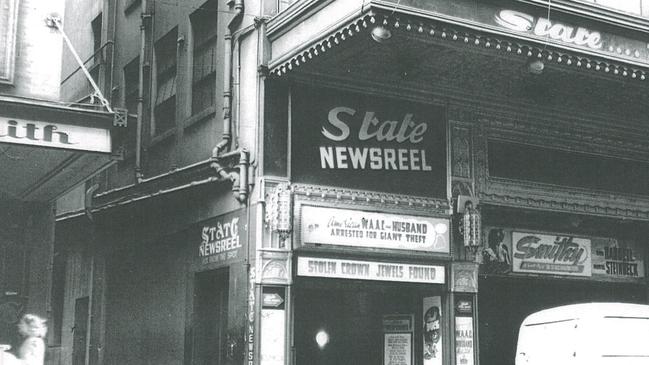
In November 1932, a newspaper advertisement announced footage of the Prince of Wales’ visit to Stockholm, which would have been an attraction to Sydney viewers who fondly remembered the visit of the “Digger Prince” to Sydney in 1920.
That same year footage of Gandhi’s “starvation campaign” was advertised and in 1933 the ominous scene’s of Hitler being elected Chancellor of Germany was promoted.
During most of the 1930s the State NewsReel Theatrette was the only source of visual news for Sydneysiders and they lapped it up.
But there was still the problem of transportation causing a lag, which meant films, particularly from overseas, were sometimes old news when featured.
To aid this, State Theatre tour guide Stuart Greene says Australian newsreel producer Cinesound developed technology to get the news to the screens faster.
“Cinesound was the first to film the Melbourne Cup in 1931 and continued to film it for many years,” Greene says.
“In order to get the race to the Sydney screen faster, they put film processing equipment on their plane so they could process the reel en route back to Sydney, effectively getting it on the screen four hours earlier.
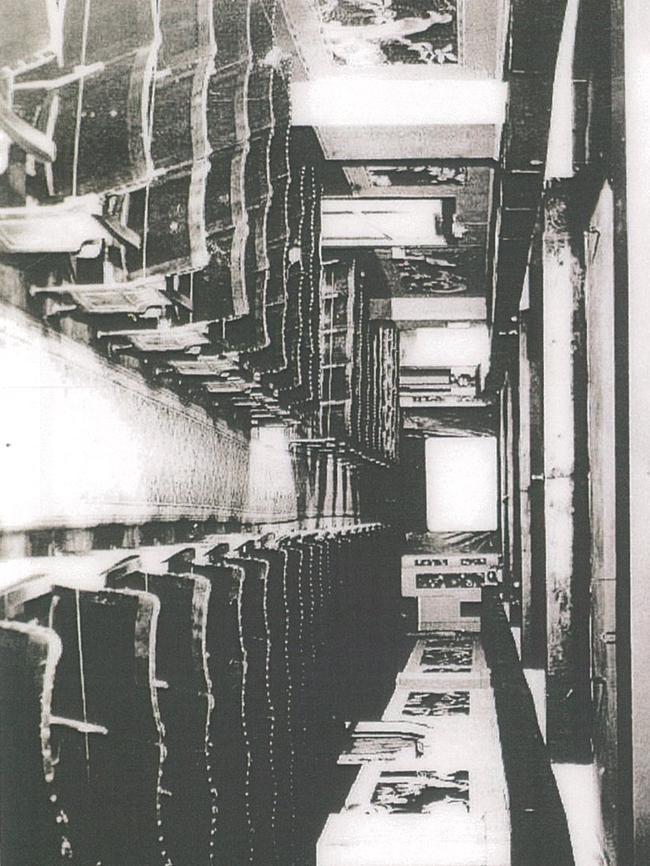
“It was revolutionary at the time.”
The newsreel ran in a continuous loop from 10am to 11pm every day except Sunday, and patrons would stay as long as they wanted with their entry fee. A new feature would be presented every Thursday.
So popular were the reels, patrons would line up outside and an usher would alert the box office when a patron left so they could let another in.
And its popularity soon gave rise to a string of copycat enterprises with four within the Sydney CBD alone and one in Kings Cross built shortly after.
“When the State Theatre opened in 1929, there was supposed to be 10 floors of retail space above the theatre and a restaurant and cafe,” Greene says.
“But as the Great Depression hit the plans did not all eventuate and the cafe space was cut in half, the left hand side turned into the State NewsReel Theatrette. As it was a bit of an afterthought, it was a long and narrow theatre and as such couldn’t have the projection box at the rear as heads would get in the way.
“Instead, they projected the images onto the screen from behind, facing the audience, and had to reverse the film onto the frosted screen so it would show correctly.”
With the advent of television, the theatre stopped operating as a NewsReel in March 1969 and switched to showing art house feature films.
“It reopened with a German sex education film called Helga and continued with sexual films like the French Emmanuelle and the soft porn musical starring Joan Collins called Can Heironymus Merkin Ever Forget Mercy Humppe And Find True Happiness?”.
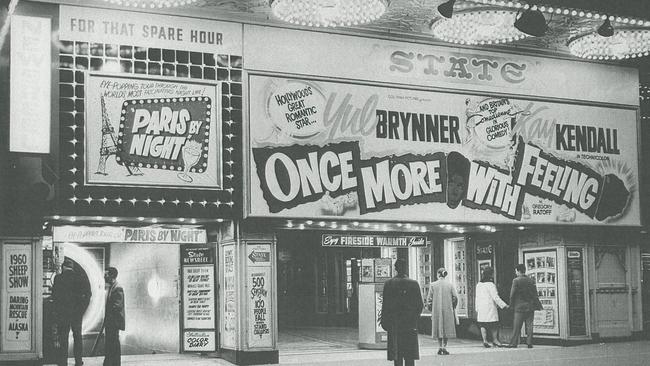
The theatre was closed for renovation for several months in 1980 but finally closed down on January 18, 1989.
Many of the fittings and the box office were donated to the National Film and Sound Archive in Canberra.
Got a local history story to share? Email mercedes.maguire@news.com.au
STILL A BLAST FROM THE PAST
The QT Sydney today stands on the site of the State NewsReel Theatrette but the owners have done much to preserve the beauty of the original building. The male bathrooms in the foyer date back 100 years and still have an
old-school urinals. Their famous ‘Suitcase Wall’ is an installation by Swedish artist Michael Johansson with 30 per cent a mix of old suitcases, TVs, lockers and desks from the site and within a 3km radius of the hotel. And the rooms on the Gowings side of the building feature vintage signage from some of the original stores, like an envelope store and hat shop.
DECLINE OF THE NEWSREEL
A newsreel is a short feature that incorporates news events, similar to the current affairs show of its day. They were first used in England in 1897 but were usually an addition to the main feature and shown in music halls in between the main entertainment and later at the start of a feature film. But in some instances, as with the State NewsReel Theatrette, they were shown as the main event, in fact the only event.
But at television grew in popularity, newsreels began to decline, with Fox Movietone News, the last of the American weeklies, gone by the 1950s.




